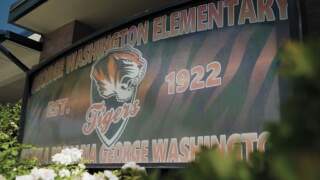A diverse group of educators from the Madera Unified recently participated in a cultural and educational exchange in Oaxaca, Mexico. The delegation, comprised of Elementary Dual Language Immersion teachers, school district leadership, school administrators, and even a Board Member, immersed themselves in the rich cultural heritage of Oaxaca while gaining insights into its educational practices and the deep culture of the families we serve. Madera California is home to a significant number of students from the state of Oaxaca, which is home to 16 official Indigenous languages out of the 68 Indigenous languages spoken in the county of Mexico with more than 350 variants and dialects.
The group stayed in the vibrant city of Oaxaca, the capital of the state of Oaxaca, known for its rich traditions, indigenous culture, and stunning landscapes. Their visit coincided with several important cultural events, offering them a firsthand experience of Oaxacan traditions.
The group also ventured beyond the city to explore the region’s artistic and natural wonders. In Teotitlán del Valle, a town renowned for its textile production, they observed the intricate weaving techniques passed down through generations. The educators were impressed by the artisans’ dedication to preserving their craft and incorporating natural dyes and traditional patterns into their work. The trip also included a visit to the archaeological site of Monte Albán, where they explored the ancient ruins of the Zapotec civilization, further deepening their understanding of the region’s history.
A key part of the trip was the exchange of ideas with Oaxacan educators. The group held a panel discussion at the Instituto de Ciencias de la Educación, a teacher preparation program focused on multilingual education. Here, the educators from Madera Unified and their Oaxacan counterparts discussed teaching methodologies, language preservation, and the challenges and successes of multilingual education.
Another significant interaction took place at Benito Juárez University, where the educators engaged in a panel discussion with university staff and students. This exchange provided a platform to discuss educational strategies, student engagement, and the role of higher education in promoting multilingualism and cultural understanding.
In Zimatlán de Álvarez, the group visited a rural school where students participate in a dual language immersion program in both Spanish and Zapoteco, one of the many indigenous languages spoken in Oaxaca. Witnessing the dedication of the teachers and students to preserving their linguistic heritage left a lasting impression on the visitors.
To further immerse themselves in the local culture, the group took language classes to learn basic Triqui vocabulary, gaining an appreciation for the diversity of indigenous languages in Oaxaca. They also participated in a gastronomy class in Tlalixtac, where they learned to prepare traditional Oaxacan dishes, adding a culinary dimension to their cultural exploration.
The trip to Oaxaca was not only an opportunity for the educators to expand their cultural horizons but also to bring back valuable insights that will enrich their teaching practices and strengthen the dual language immersion programs in Madera Unified.









